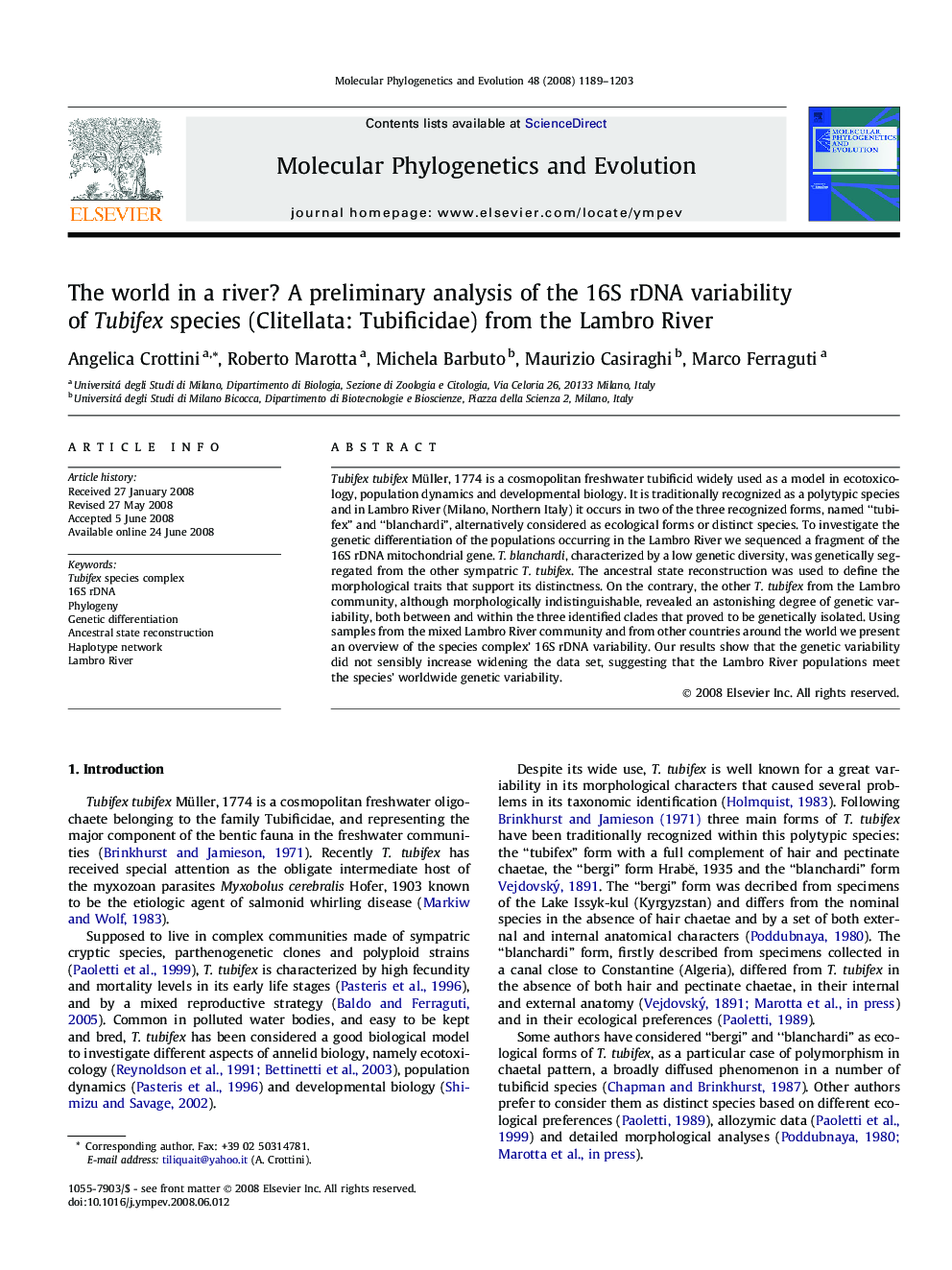| Article ID | Journal | Published Year | Pages | File Type |
|---|---|---|---|---|
| 2835173 | Molecular Phylogenetics and Evolution | 2008 | 15 Pages |
Tubifex tubifex Müller, 1774 is a cosmopolitan freshwater tubificid widely used as a model in ecotoxicology, population dynamics and developmental biology. It is traditionally recognized as a polytypic species and in Lambro River (Milano, Northern Italy) it occurs in two of the three recognized forms, named “tubifex” and “blanchardi”, alternatively considered as ecological forms or distinct species. To investigate the genetic differentiation of the populations occurring in the Lambro River we sequenced a fragment of the 16S rDNA mitochondrial gene. T. blanchardi, characterized by a low genetic diversity, was genetically segregated from the other sympatric T. tubifex. The ancestral state reconstruction was used to define the morphological traits that support its distinctness. On the contrary, the other T. tubifex from the Lambro community, although morphologically indistinguishable, revealed an astonishing degree of genetic variability, both between and within the three identified clades that proved to be genetically isolated. Using samples from the mixed Lambro River community and from other countries around the world we present an overview of the species complex’ 16S rDNA variability. Our results show that the genetic variability did not sensibly increase widening the data set, suggesting that the Lambro River populations meet the species’ worldwide genetic variability.
